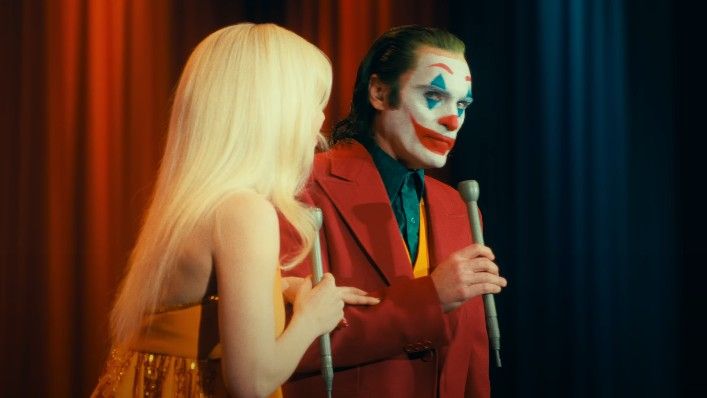
Title: Joker: Folie À Deux
Director: Todd Phillips
Cast: Joaquin Phoenix, Lady Gaga, Brendan Gleeson, Catherine Keener, Steve Coogan
Where to watch: In theatres
Rating: ***1/2 stars
In the dim light of the stage, he dances on the edge of chaos, laughter mingling with sorrow. Behind painted smiles lies a heart heavy with unspoken truths, a jester who knows that joy and despair often wear the same mask. Each joke is a cry for understanding, a reminder that sometimes the brightest laughter echoes the deepest pain. This film, the sequel to Todd Phillips’ acclaimed 2019 film, delves deeper into the fractured psyche of Arthur Fleck, exploring the complex interplay between madness and societal neglect. A musical-cum-courtroom drama, this film uses dramatics to tug at the heartstrings in unexpected ways.
The film opens with the provocative song whose lyrics run, "What the world needs now is love…," setting a tone of irony as the narrative unravels. It’s a melody that touches all those who love and pine for love, acting as a bittersweet refrain throughout the film. Following the tumultuous events of the first film, Arthur, played once again by Joaquin Phoenix, navigates the dark underbelly of Gotham while grappling with his identity as the Joker. Phoenix delivers another hauntingly powerful performance, embodying the character’s descent with an intensity that keeps viewers riveted. His transformation from a helpless victim of circumstances to a confident individual representing himself in a murder trial is palpable, making his twisted journey even more compelling.
This sequel introduces Lady Gaga as Harley Quinn, adding a new layer of complexity to the narrative. Their chemistry is electric, depicting a relationship that oscillates between love and manipulation. Gaga brings her brand of madness to the role, infusing Harley with vulnerability and ferocity. Together, they create a dynamic that is both mesmerising and unsettling, showcasing the duality of their characters as they spiral further into chaos.
Visually, the film is a masterclass in cinematography. Lawrence Sher’s lens captures Gotham’s grim atmosphere, contrasting vibrant colours with shadows that loom large, mirroring the emotional turmoil of its protagonists. The film’s musical score, a collaboration between Hildur Guðnadóttir and new contributors, further heightens the tension, blending haunting melodies with dissonant sounds that reflect the chaos of Arthur and Harley’s minds. The musical numbers are both a celebration and a descent into madness, blurring the line between reality and illusion.
One of the film’s most compelling themes is the nature of sanity and how society’s failures can warp the human experience. As Arthur and Harley navigate their chaotic relationship, the film presents a critique of a world that often fails to understand or support those struggling with mental illness. It challenges viewers to confront their perceptions of madness and empathy.
Nevertheless, this film serves as an essential reminder that within every joke lies a profound truth, prompting viewers to reflect on the human condition. Though it may not be the most accessible viewing experience, its boldness invites contemplation and discussion. Ultimately, while it does not fully succeed in its romantic aspirations, it remains a significant cultural artifact that challenges audiences to confront uncomfortable truths within themselves and society.